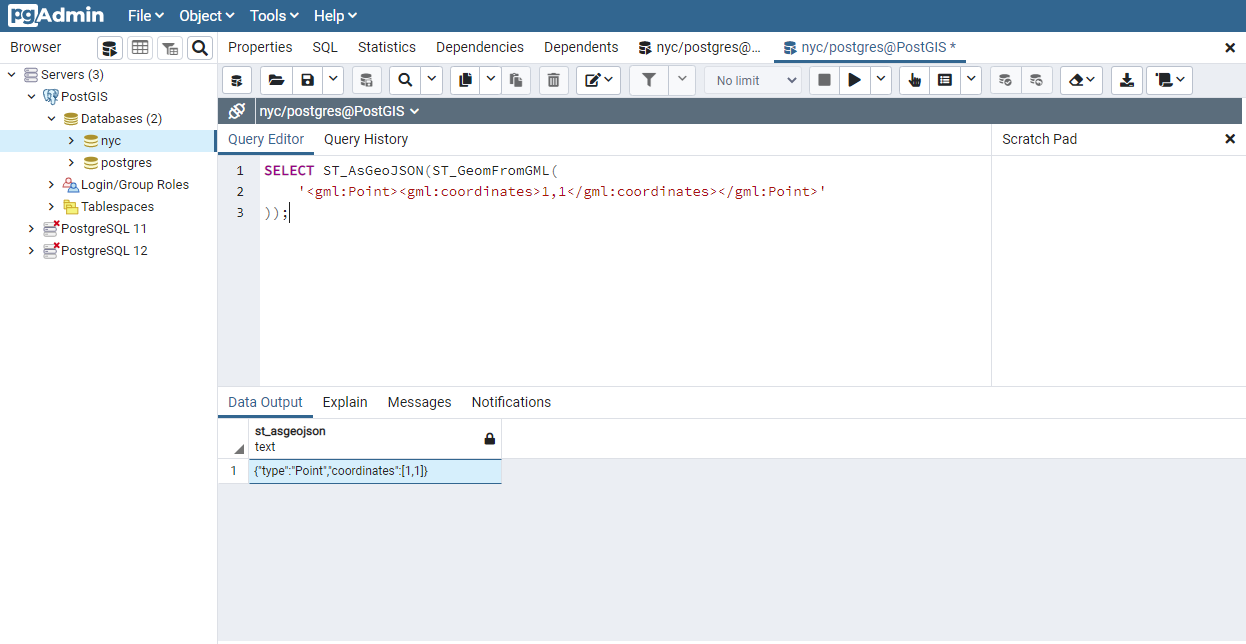

RENAME CONSTRAINT constraint_name TO new_constraint_nameĪLTER TABLE ALL IN TABLESPACE name ]ĪTTACH PARTITION partition_name AS IDENTITY
#Alter table add column postgres how to
In this tutorial, you have learned how to use PostgreSQL DROP COLUMN clause in the ALTER TABLE statement to drop one or more columns from a table.ALTER TABLE name To remove both isbn and description columns using a single statement, you add multiple DROP COLUMN clauses as follows: ALTER TABLE books
#Alter table add column postgres code
NOTICE: drop cascades to view book_info Code language: SQL (Structured Query Language) ( sql ) The statement issued the following notice, which is what we expected. You need to use the CASCADE option to remove both the publisher_id column and book_info view as shown in the following statement: ALTER TABLE books It stated that the book_info view is using the column publisher_id of the books table. CASCADE to drop the dependent objects too. PostgreSQL issued the following error: ERROR: cannot drop table books column publisher_id because other objects depend on itĭETAIL: view book_info depends on table books column publisher_id The following statement attempts to remove the publisher_id column: ALTER TABLE booksĭROP COLUMN publisher_id Code language: SQL (Structured Query Language) ( sql ) "books_publisher_id_fkey" FOREIGN KEY (publisher_id) REFERENCES publishers(publisher_id)Īs you can see from the output, the statement removed not only the category_id column but also the foreign key constraint that involves the category_id column. "books_pkey" PRIMARY KEY, btree (book_id) +-+-īook_id | integer | not null default nextval('books_book_id_seq'::regclass) Let’s show the structure of the books table: test=# \d books The following statement uses the ALTER TABLE DROP COLUMN statement to remove the category_id column fro the books table: ALTER TABLE booksĭROP COLUMN category_id Code language: SQL (Structured Query Language) ( sql ) In addition, we create a view based on the books and publishers tables as follows: CREATE VIEW book_info The following statements create the three tables: CREATE TABLE publishers (Ĭode language: SQL (Structured Query Language) ( sql ) Each book is assigned to a category and each category can have many books.

In this diagram, each book has only one publisher and each publisher can publish many books. We will create three tables: books, categories, and publishers for the demonstration. Let’s look at some examples to see how the ALTER TABLE DROP COLUMN statement works. This is possible in PostgreSQL, but not possible according to SQL standard. If a table has one column, you can use drop it using the ALTER TABLE DROP COLUMN statement. Notice that you need to add a comma ( ,) after each DROP COLUMN clause. Code language: SQL (Structured Query Language) ( sql ) If you want to drop multiple columns of a table in a single command, you use multiple DROP COLUMN clause like this: ALTER TABLE table_name In this form, if you remove a column that does not exist, PostgreSQL will issue a notice instead of an error. To remove a column only if it exists, you can add the IF EXISTS option as follows: ALTER TABLE table_nameĭROP COLUMN IF EXISTS column_name Code language: SQL (Structured Query Language) ( sql ) If you remove a column that does not exist, PostgreSQL will issue an error. In this case, you need to add the CASCADE option to the DROP COLUMN clause to drop the column and all of its dependent objects: ALTER TABLE table_nameĭROP COLUMN column_name CASCADE Code language: SQL (Structured Query Language) ( sql )

If the column that you want to remove is used in other database objects such as views, triggers, stored procedures, etc., you cannot drop the column because other objects are depending on it. When you remove a column from a table, PostgreSQL will automatically remove all of the indexes and constraints that involved the dropped column. To drop a column of a table, you use the DROP COLUMN clause in the ALTER TABLE statement as follows: ALTER TABLE table_nameĭROP COLUMN column_name Code language: SQL (Structured Query Language) ( sql ) Introduction to PostgreSQL DROP COLUMN clause Summary: this tutorial shows you how to use the PostgreSQL DROP COLUMN clause in the ALTER TABLE statement to remove one or more columns of a table.


 0 kommentar(er)
0 kommentar(er)
